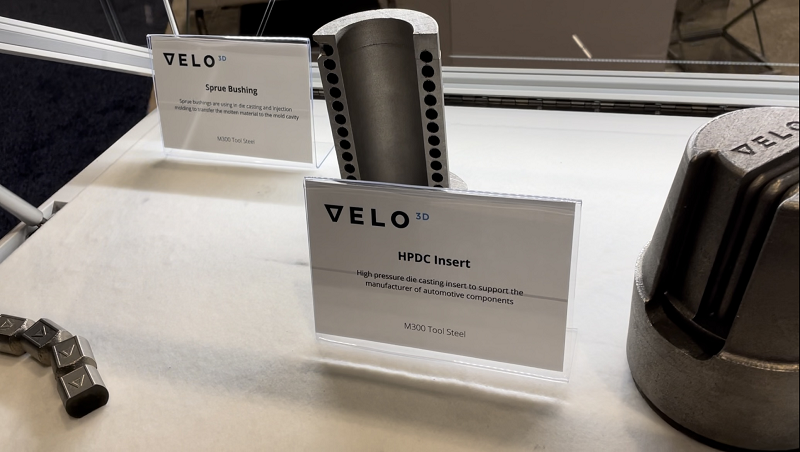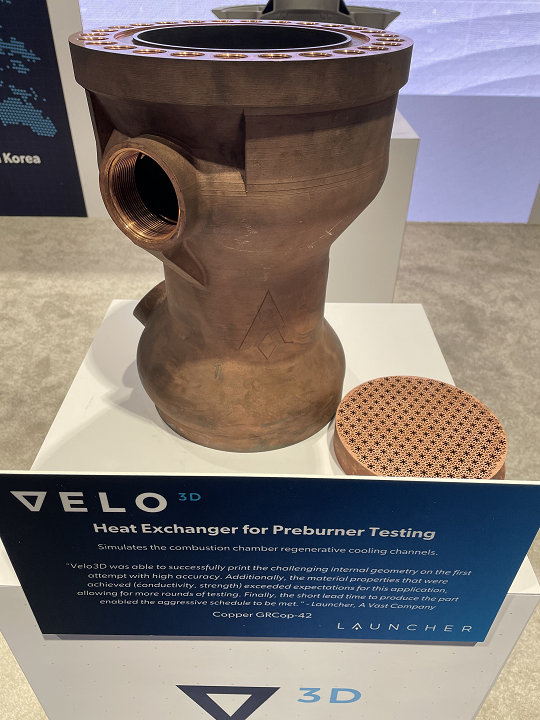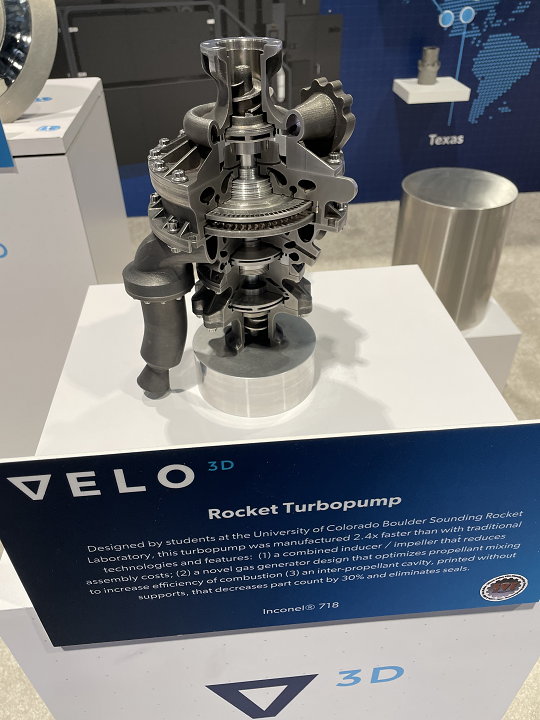From Oil to Automotive and Space, Velo3D Brings Repeatability and New Materials to Metal 3D Printing
As metal 3D printing firm Velo3D (NYSE: VLD) expands from its established verticals, like space, oil and gas, and military, the company has had to develop newer materials that suit the needs of industry at large. At the same time, Velo3D continues to push into its bread-and-butter verticals with the use of metal powders that drive those applications further. I spoke to Dan Sorenson, Senior Director of Public Relations and Social Media, who was able to discuss the progress it’s made with the automotive sector using its new M300 tool steel, as well as the deployment of NASA’s GRCop-42, and how Velo3D has brought repeatability to the oil and gas sector.
Velo3D recently qualified M300 tool steel for use in its Sapphire 3D printers, and now counts two major U.S. automotive manufacturers as customers. But, Sorenson said the company is also “seeing a lot of interest” for its use in high pressure die cast (HPDC). A sprue bushing was on display—3D printed out of M300—which transfers molten material to the mold cavity in die casting and injection molding. The conformal cooling channels inside print without supports.
“You inject molten metal into it. And then the conformal cooling channels control the cooling to cool at the proper speed, which in turn prolongs the life of the die itself,” he explained. “So, you know, if you’re GM and you’re cranking out all of these car parts, you have minimal downtime, because you don’t have to swap out the inserts as much. It also, in a lot of cases, will yield a stronger product, because of the speed of the cooling.”
There were also 3D printed flow control valves, printed out of Inconel 718. These choke valves are used in oil and gas production, an industry which has increased its adoption of 3D printing in the last few years. Sorenson said the fact that a digital supply chain can be created with 3D printing is a major benefit here.
“We showed that you could take a legacy design, slightly rework it for 3D printing, and 3D print it all in one piece,” he said. “The goal was to show that you could reverse engineer it and 3D print it. Which we did, but then they were like, let’s prove that we can get identical results across multiple printers with the same print file. So all of these parts were produced on different machines on multiple continents. And I think there’s actually more, there were 12 valves total.”
Sorenson said all the choke valves performed “within spec” when they were tested, which proves that repeatable results can be achieved and that “you can scale up as you need to.”
“What’s really interesting about this is because, imagine you are producing parts at somewhat of a volume. As your demand increases or decreases, you may need more machine power. And so you can easily offload that to one of our contract manufacturers. So maybe you start with a contract manufacturer, and as you build up demand, maybe you bring the printing in-house. And then you can use that to kind of scale up or down as you need to.”
The last thing Sorenson showed me was a heat exchanger for pre-burning of fuel. This was printed out of copper alloy GRCop-42, developed by NASA for heat transfer properties with high tensile strength. Liquid oxygen is pumped in through the top, which is then combusted so it turns into gas oxygen.
“And then it travels through the body, which has this kind of crazy structure,” he explained. “It travels through that and then out the bottom.”
Fuel is being pumped in and out, and once it’s pumped through and preheated, it meets with the oxygen for the final combustion.
Subscribe to Our Email Newsletter
Stay up-to-date on all the latest news from the 3D printing industry and receive information and offers from third party vendors.
Print Services
Upload your 3D Models and get them printed quickly and efficiently.
You May Also Like
The Market and Industry Potential of Multi-Material 3D and 4D Printing in Additive Electronics
Additive manufacturing leverages computer-based software to create components for products by depositing either dielectric or conductive materials, layer by layer, into different geometric shapes. Since its birth in the 1980s,...
3DPOD 262: Bio-inspired Design for AM with Dhruv Bhate, Arizona State University
Dhruv Bhate is an associate professor at Arizona State University. There, he looks at structures, materials, and design. Previously, he worked at PADT as well as in the semiconductor and...
3DPOD 261: Tooling and Cooling for AM with Jason Murphy, NXC MFG
Jason Murphy´s NXC MFG (Next Chapter Manufacturing) is not a generalist service; instead, the company specializes in making tooling. Using LPBF and binder jet, the company produces some of the...
3DPOD 260: John Hart on VulcanForms, MIT, Desktop Metal and More
John Hart is a Professor at MIT; he´s also the director of the Laboratory for Manufacturing and Productivity as well as the director of the Center for Advanced Production Technologies....






































